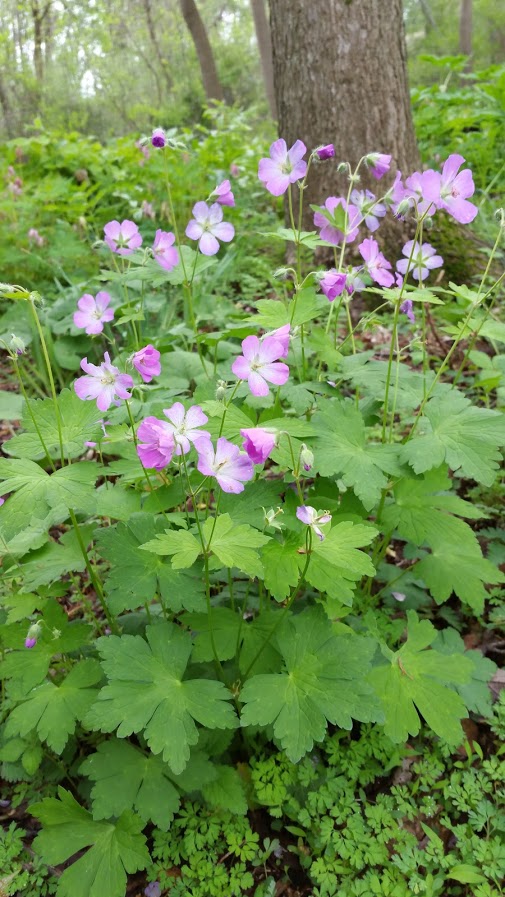
Spotted geranium is a woodland perennial wildflower in the Gerianaceae family. Its Latin nomenclature is Geranium maculatum — the etymology of Geranium comes from the Greek geranos meaning “crane,” in reference to the fruiting capsules of this genus which resemble the beak of a crane, and the species name maculatum means “spotted” and describes the mottling of the leaves.
Spotted Geranium is generally abundant where it is found. They are native all over eastern and central North America in temperate deciduous forests, and hardy from zones 3-8. It is clump-forming, and tolerates a wide variety of soil conditions. These spring ephemeral wildflowers thrive in the understory of a closed canopy deciduous woodland, where they bloom in the early spring before the leaves grow in and cast shade. They are also hardy to some areas with partial sun, such as woodland edges. They seem to like some lingering moisture and cooler soil temperatures however, and therefore they do not do well in areas with full-sun.
The flowers bloom in early March in warm southeastern zones, and they bloom in April in cooler zones. In Pennsylvania I usually see them starting around mid-April, and the seed ripening around the end of May and early June.
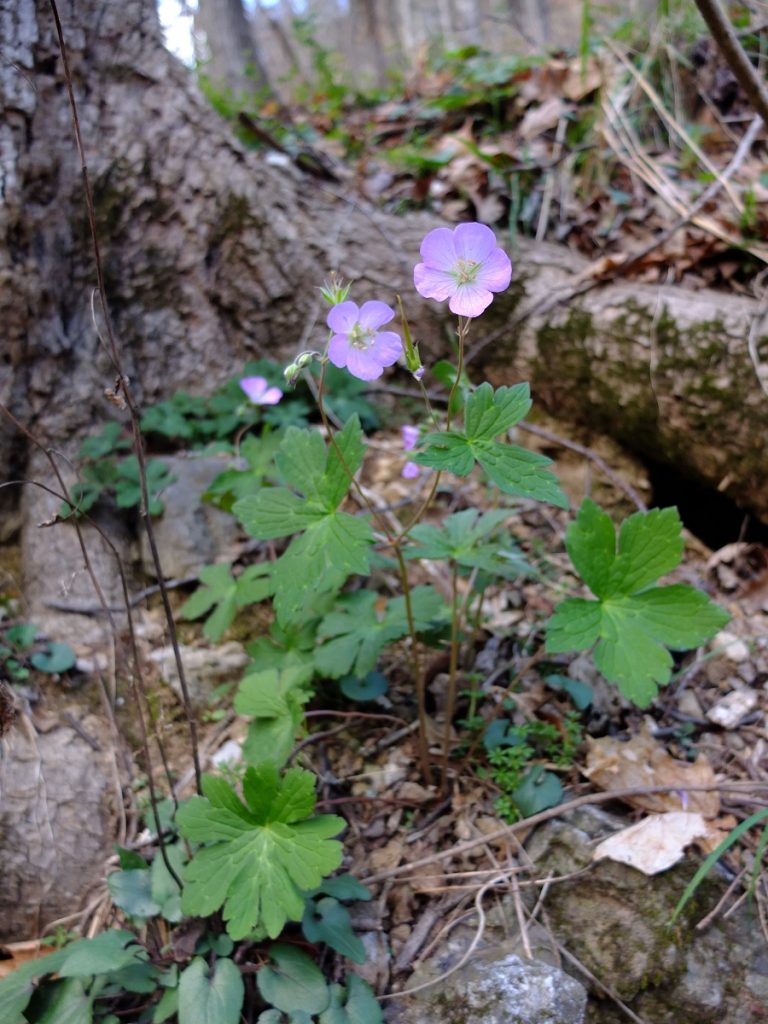
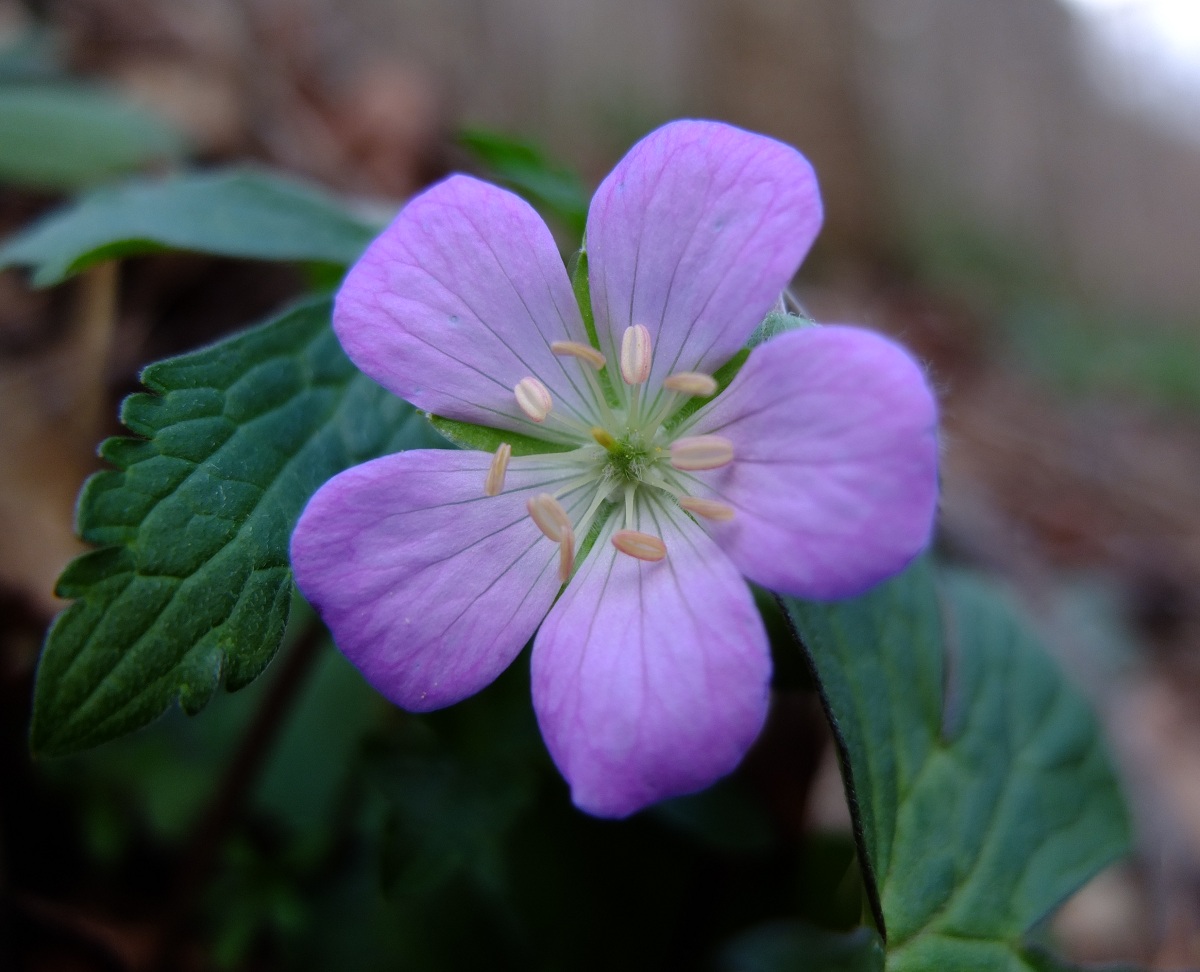
Geranium species are in the group of eudicots called Rosids, which often have flower parts in fours or fives. Their pink-to-purple flowers are quite lovely, and are considered perfect flowers, meaning they contain both male and female reproductive parts. Geranium maculatum is self-fertile and produces its elongated fruiting capsules in the late spring. The seeds ripen approximately 6 weeks after the flowers first bloom.
The fruiting capsules are made up of five chambers which each enclose a single seed at their base. At first, the fruiting capsules are green, but when the seed has ripened, the fruiting capsules turn black (seeds ripened to maturity are also black). After darkening, the capsules dehisce, or split open, from their bases curling upwards, releasing in the process each seed and flicking them a short distance away from the parent plant.
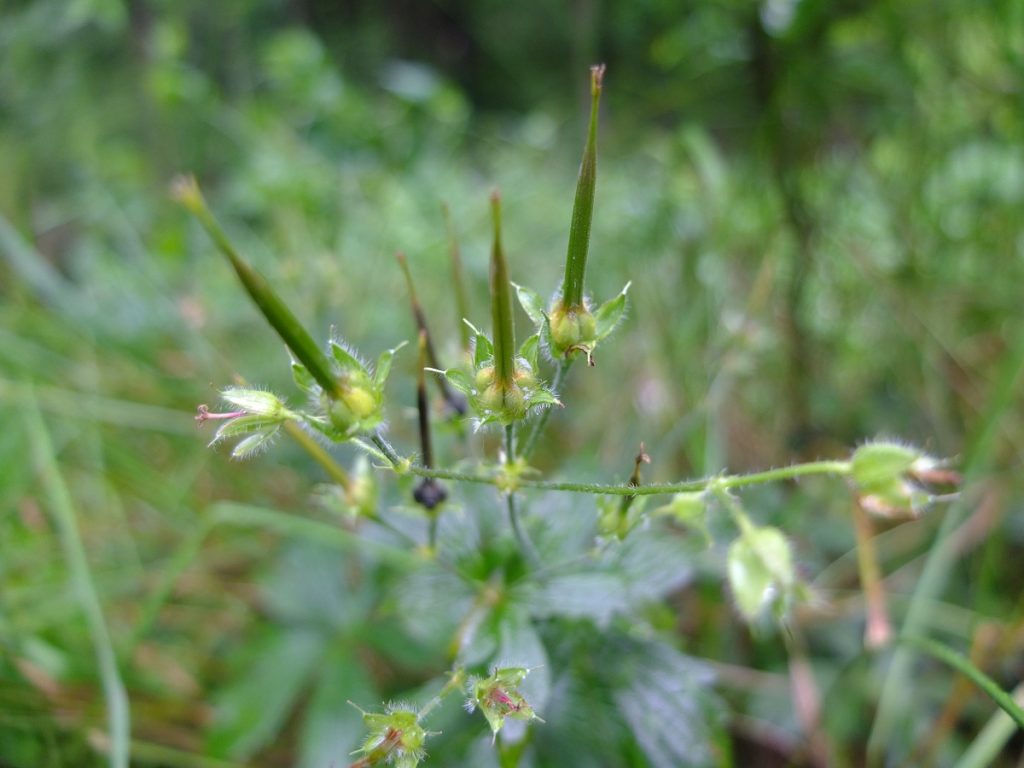
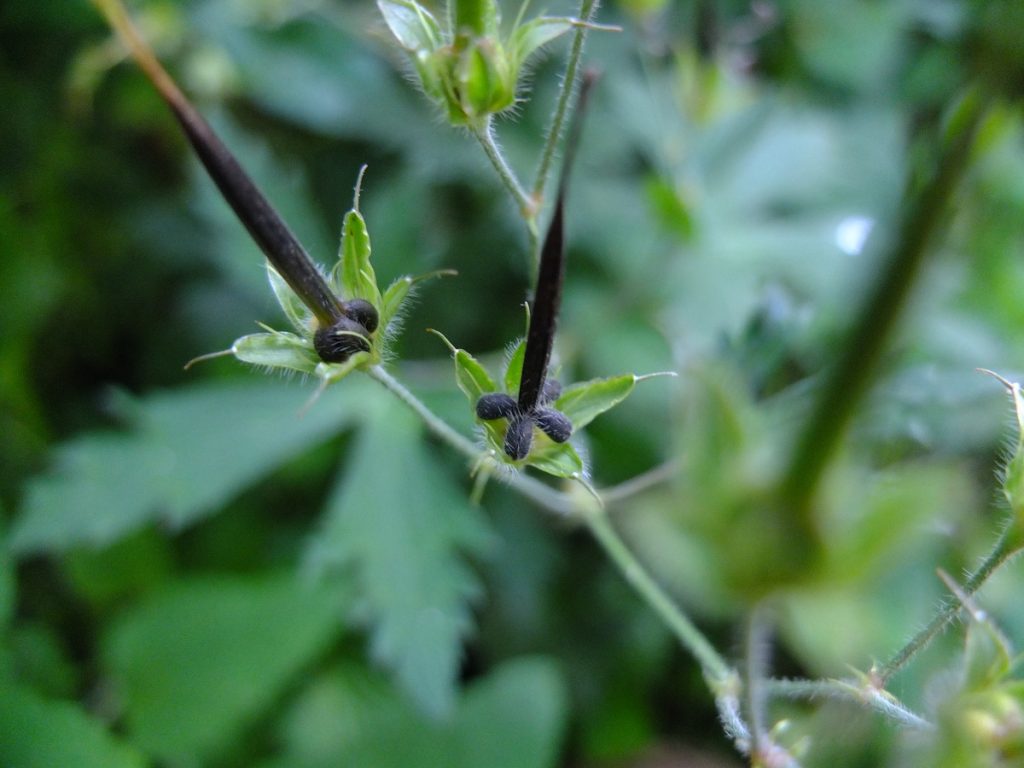
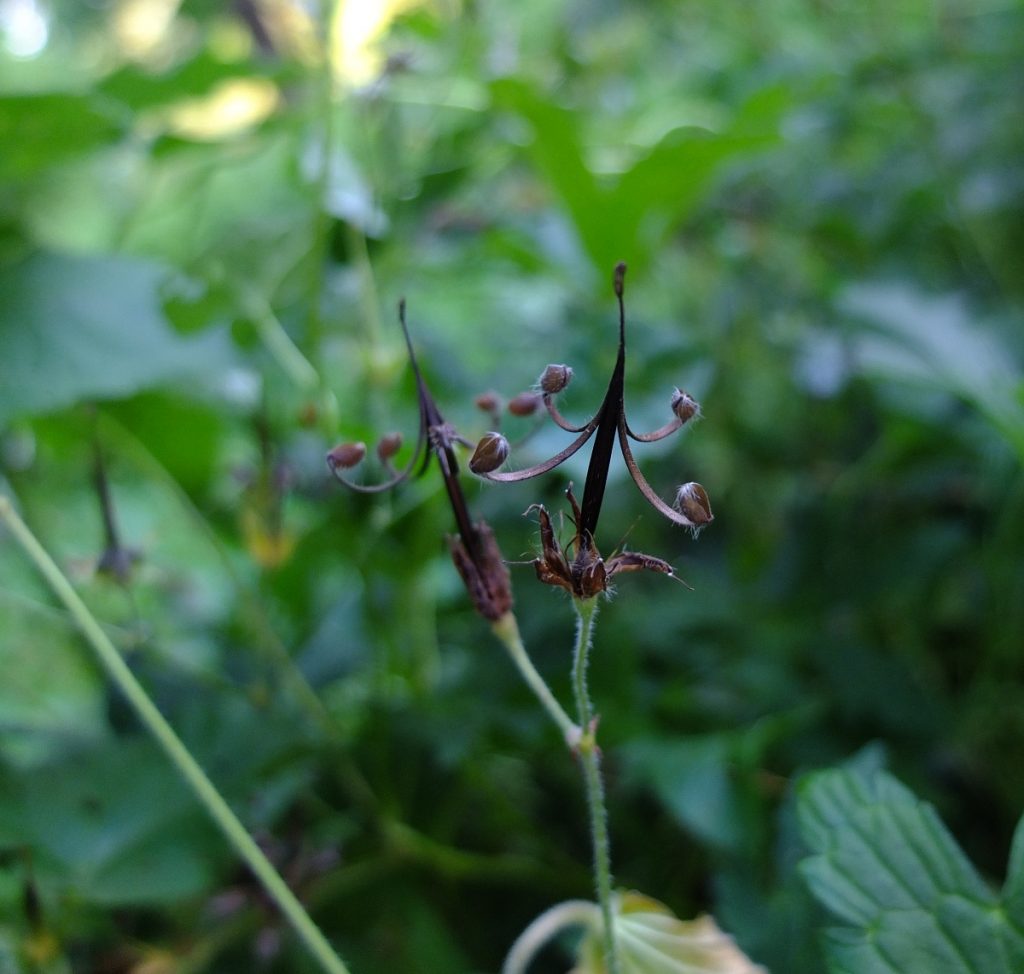
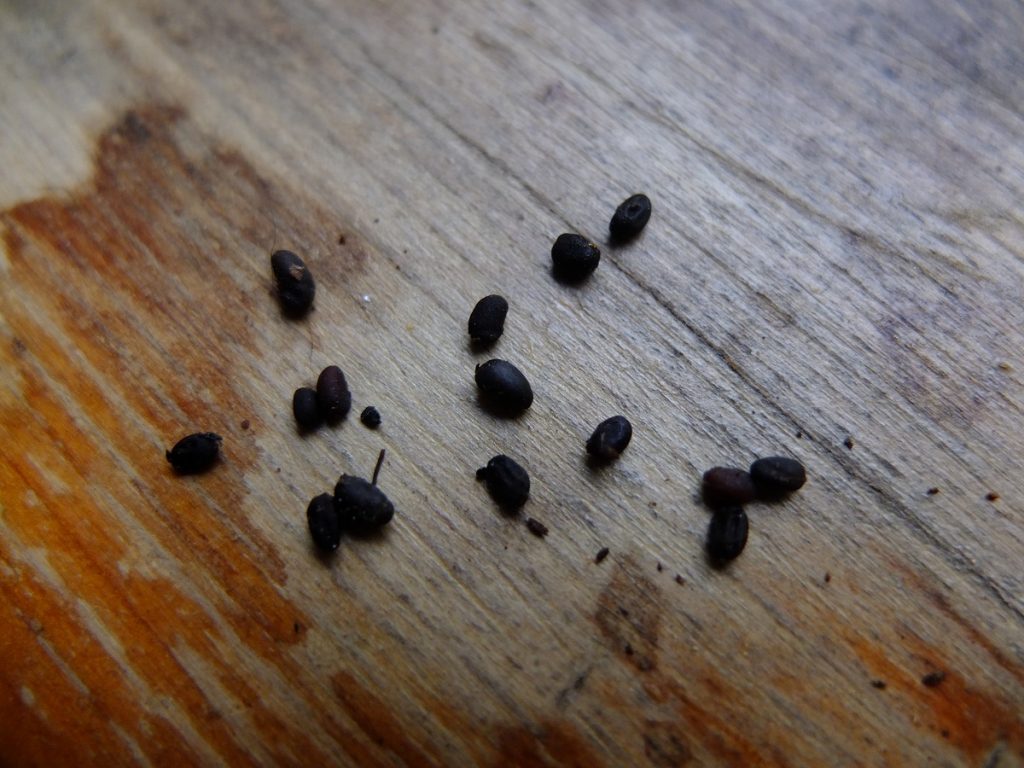
Geranium maculatum seeds may be stored dry in a cool area. They germinate naturally in the early spring following a period of 2-3 months of cold stratification (also known as winter 🙂 ). It can take two or three years from seed germination to mature flowering. The flowers of spotted geranium are loved by pollinators such as bees and butterflies. They are easy to grow and ideal for reintroduction and restoration to damaged and degraded woodlands. This is also a worthwhile candidate for rewilding into landscapes where this species is not already present in the seedbank — more diversity is healthy, and beautiful!